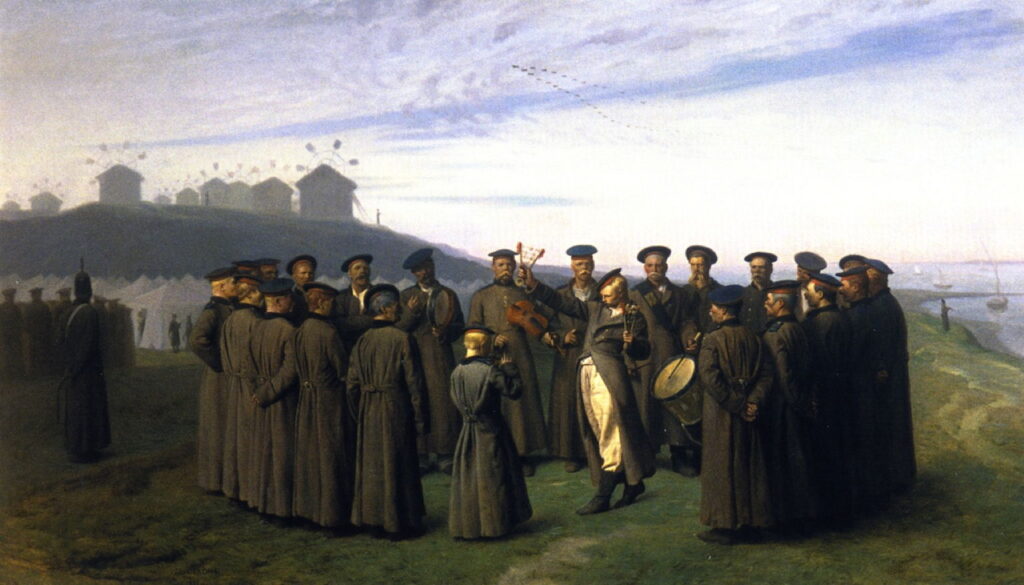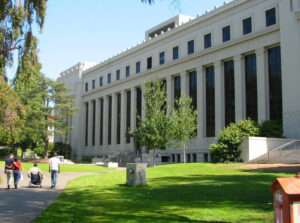The Truthful Vision of Jean-Léon Gérôme 1

Our view of art in the nineteenth century has been carefully crafted to lead us to think that visual art was dominated by the Impressionist movement as a precursor to modernist painting in the following century. At the time, and in a more balanced history, alongside the likes of Claude Monet was Jean-Léon Gérôme (1824–1904), who was born two hundred years ago on 11 May 1824. This is the first article in a series to celebrate this major anniversary next month.
Whether viewed in the Salon, the commercial gallery, or the teaching studios of the École des Beaux-Arts in Paris, Gérôme was the dominant French painter for much of the second half of the nineteenth century. He was also one of the most vociferous opponents of Impressionism, and by the end of the century had fallen into disfavour, in spite of his promotion of photography as a new form of art, something few other painters dared support.
Gérôme’s first painting to be shown at the Salon, in 1847, was made during a time of increasing tension as the July Monarchy neared collapse. The following year, France underwent revolutions, leading to Napoleon III’s coup in December 1851, and the Second Empire. During this, much of the city of Paris was razed to the ground, and rebuilt according to the grand designs of Baron Haussmann. But that too ended in disaster, when France’s crushing defeat in the Franco-Prussian War of 1870-71 brought the Third Republic with its extensive social change and modernisation. Gérôme died in his studio just a decade before the start of the First World War.
Gérôme trained in the studio of Paul Delaroche, a great history painter, and for about three months with Charles Gleyre, who later taught Whistler, Monet, Renoir, Sisley, and Frederic Bazille. He joined a group of artists known as the Neo-Greeks, who favoured light and witty scenes from the classics, and rejected the serious and sober approach of neoclassicism. His first bid for fame failed, when his entries in the Prix de Rome in 1846 found no favour with its judges. He then painted his first significant work, The Cock Fight (1846), exhibited at the Salon the following year.
Jean-Léon Gérôme (1824–1904), The Cock Fight (Young Greeks Attending a Cock Fight) (1846), oil on canvas, 143 x 204 cm, Musée d’Orsay, Paris. Wikimedia Commons.
This motif had started from a relief showing two adolescent boys facing off against one another. Gérôme felt he needed to improve his figurative painting, and after Delaroche’s advice decided to develop that image by replacing one of the boys with a girl. In both Greek and English (but not French) the word cock is used for both the male genitals and a male chicken, and the youthful Gérôme must have found this combined visual and verbal pun witty and very Neo-Greek.
There’s a curious ambivalence in its reading too: two cocks are fighting in front of the young couple. Is one of the birds owned by the girl, and if so, is it the dark one on the left, which appears to be getting the better of the bird being held by the boy? Either way, it’s a lightly entertaining reflection on courtship and gender roles, and a promising debut. The Cock Fight earned Gérôme a third-class medal, and he sold the painting for a thousand francs. With the benefit of favourable reviews from critics, the following year brought him lucrative commissions, and a growing reputation.
Jean-Léon Gérôme (1824–1904), Anacreon, Bacchus, and Amor (1848), oil on canvas, 135.9 x 211.1 cm, Musée des Augustins, Toulouse, France. The Athenaeum.
Gérôme followed that with Anacreon, Bacchus, and Amor in 1848. This harks back to the secret rites of Bacchantes, invoking Anacreon, one of the nine canonical Greek lyric poets, again very Neo-Greek. The poet takes centre stage with his lyre at his shoulder. Dancing at his feet are an infant Bacchus at the left, waving his thyrsus and looking to the left at a young woman playing the double pipes. To the right of Anacreon is Cupid (Amor), with his wings, bow, and quiver of arrows. Behind is a procession of men and women, and in the left distance they are dancing in a large circle.
This painting was exhibited in the Salon that year, from where it was purchased by the state for 1,800 francs. I can’t help but think it must have been a suitable piece of escapism from the political tensions of the February Revolution that took place that year, leading to the Second Republic.
Jean-Léon Gérôme (1824–1904), The Republic (1848), oil on canvas, 228.6 x 193 cm, Private collection. The Athenaeum.
In 1848, the short-lived Second Republic ran a competition for a painting to form its figurehead. Gérôme entered The Republic in that, but was unsuccessful. This is his improved entry for the second round, which isn’t too far removed from the figure later used for the Statue of Liberty.
Jean-Léon Gérôme (1824–1904), Michelangelo (1849), oil on canvas, 51.4 x 37.5 cm, Dahesh Museum of Art, New York, NY. The Athenaeum.
Of all these early works, it’s Gérôme’s relatively small and simple painting of Michelangelo from 1849 that is the most enigmatic. Michelangelo is shown in his dotage, hunched over and blind, being led by a young boy whose dress would have aroused his master’s homoerotic desires. The broken sculpture is the Belvedere Torso, a huge fragment of marble statuary so loved by the sculptor that it was nicknamed the School of Michelangelo. The young boy is leading his master’s hands to stroke and caress the marble, now that he was unable to enjoy looking at its classical and very male form.
This is perhaps the first sign of Gérôme’s developing theme of sight, and the role of vision in establishing truth. In his blindness, Michelangelo can only feel what we can see, and cannot see the figure of the young boy. This is particularly appropriate to Gérôme, who later in his career became a successful sculptor himself, and whose later paintings referred to his sculptures and the act of creating them.
Jean-Léon Gérôme (1824–1904), Grecian Interior, Le Gynécée (1850), oil on canvas, 64 x 88 cm, Private collection. The Athenaeum.
Gérôme met more criticism when he exhibited Grecian Interior, Le Gynécée in the Salon of 1850. One critic, Théophile Gautier, compared it to one of Ingres’ paintings, but it was more widely condemned for its immorality, as you might appreciate.
It has been disputed as to whether the scene depicted here is that of Messalina’s legendary brothel, or was inspired by a poem by Simonides of Amorgos considering the temperament of women. Its title states that it shows the women’s area or gynaeceum within a large Greek house, where the unmarried women relaxed and socialised with one another, a refuge to which the ‘woman of the house’ would return when not with her husband.
Despite its four well-lit nude women, there is more to this painting than that expanse of flesh. The woman resting on the couch, looking away from the viewer, appears to be in the early stages of pregnancy. Most of all, though, it is Gérôme’s first classical painting filled with small clusters of apparently random objects, for example, at the right edge, and around the shrine to the left of centre.
Gérôme became almost obsessive in decorating his classical paintings with all sorts of bric-a-brac, like an old curiosity shop. Although he researched these extensively, many are now considered to be inappropriate or anachronistic, and some are just odd. Like the fine detail on the tiled floor, they enhance the impression of reality, giving many of his paintings what would now be termed a photographic quality over eighty years before colour photography became commonplace.
Jean-Léon Gérôme (1824–1904), The Idyll (Innocence, Daphnis and Chloe) (1852), oil on canvas, 212.1 x 155.9 cm, Musée Massey, Tarbes, France. The Athenaeum.
One problem Gérôme experienced throughout these early works was integrating his figures into the overall colour and look of the painting. Critics at the time commented on how his figures too often looked as if they had been pasted onto the canvas. This was less true of his Grecian Interior, but becomes quite prominent in this painting, The Idyll, also known as Innocence, or Daphnis and Chloe, from 1852, shown in the Salon of 1853. This is perhaps made worse by this painting’s lack of depth, and Daphnis’ sculptural appearance.
With Napoleon III installed as the Emperor of France, and Gérôme’s early paintings generally well-received, it was time for the artist to tackle more substantial visual stories. He had a little money, and in late 1853 set off for Austria, central Europe and Moscow, but the Crimean War forced him to alter his plans and to limit his travel. Instead, he followed the River Danube and the coast of the Black Sea down to Istanbul. With the Exposition Universelle coming up in 1855, he needed paintings to impress a more international public.
Jean-Léon Gérôme (1824–1904), Allegory of Night (1853), oil on canvas, 228 cm diam tondo, Private collection. The Athenaeum.
One delightful tondo he painted during 1853 is this Allegory of Night. Three winged putti bring together some of the classical symbols of night and sleep: that on the right, for example, is scattering sleep-inducing poppies, as in Virgil’s words in Book 4 of his Aeneid. This is the sort of painting which could win him valuable commissions for wall paintings, perhaps, just the sort of work becoming available with Napoleon III in power.
Jean-Léon Gérôme (1824–1904), The Leap of Marcus Curtius (c 1850-1855), oil on canvas, 53.3 x 55.2 cm, Smith College Museum of Art, Northampton, MA. The Athenaeum.
The Leap of Marcus Curtius (c 1850-1855) depicts a short and not too demanding legend of a hero of classical Rome. Following an earthquake (now dated to 362 BCE), a great bottomless chasm opened up in the middle of the Forum. Attempts to fill it were unsuccessful, so an augur was consulted, who responded that the gods demanded the most precious possession of the state.
Marcus Curtius was a young soldier who proclaimed that arms and the courage of Romans were the state’s most precious possessions. In a moment of supreme self-sacrifice, he then rode into the pit in his finest armour, astride his charger, the moment shown by Gérôme. As he and his horse fell into its abyss, the chasm closed over him, and the city was saved.
Gérôme makes clear its underlying patriotic moral: self-sacrifice may be necessary for the State.
Jean-Léon Gérôme (1824–1904), The Age of Augustus, the Birth of Christ (study) (c 1855), oil on canvas, 37.1 x 55.2 cm, J Paul Getty Museum, Los Angeles, CA. Courtesy of J Paul Getty Museum.
Less successful was his vast and ambitious The Age of Augustus, the Birth of Christ, of which this is the study, painted in about 1855. The emperor sits on his throne, overseeing a huge gathering of people from all over the Roman Empire. Grouped in the foreground in a quotation from a traditional nativity is the Holy Family, whose infant son was to transform the empire in the centuries to come.
Gérôme had based this on a synthesised history dating back to Jacques-Bénignes Bosquet in 1681, but its grand spectacle failed to captivate the critics or the crowds at the Exposition Universelle.
Jean-Léon Gérôme (1824–1904), Recreation in a Russian Camp, Remembering Moldavia (1855), oil on canvas, 59.5 x 101.5 cm, Private collection. The Athenaeum.
Instead, and perhaps mindful of the recent war in Crimea, Gérôme’s more modest late entry of Recreation in a Russian Camp, Remembering Moldavia (1855) was much better received. The artist claimed to have witnessed this scene when travelling down the River Danube: a group of Russian soldiers in low spirits is being uplifted by making music, under the direction of their superior.
Gérôme has here captured an atmosphere that few of his paintings achieved. The marvellous light of the sky, the skein of geese on the wing, and the parade of windmills in the distance all draw together with the soldiers in their sombre greatcoats.
Overall the Exposition Universelle was a success for Gérôme, bringing him a Second Class medal from its jury, and later that year admission to the Legion of Honour. Soon afterwards, he left France to travel extensively in North Africa and the Middle East, and didn’t return until the Spring of 1856. He then submitted five paintings from ‘the Orient’ and two others to the Salon in 1857, considered in the next article.
References
Ackerman GM (2000) Jean-Léon Gérôme, Monographie révisée, Catalogue Raisonné Mis à Jour, (in French) ACR Édition. ISBN 978 2 867 70137 5.
Scott Allan and Mary Morton, eds. (2010) Reconsidering Gérôme, Getty. ISBN 978 1 6060 6038 4.
Gülru Çakmak (2017) Jean-Léon Gérôme and the Crisis of History Painting in the 1850s, Liverpool UP. ISBN 978 1 78694 067 4.
de Cars L et al. (2010) The Spectacular Art of Jean-Léon Gérôme (1824-1904), Skira. ISBN 978 8 85 720702 5.



